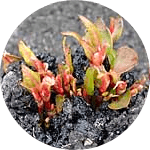Rosebay Willowherb Removal & Control

The overview
Common Name: Rosebay willowherb
Latin name: Chamerion angustifolium
In Detail
- Seeds have hair like structures which aid wind dispersal enabling them to travel large distances. Each plant can produce around 80,000 seeds per year.
- Plants are shallowly rooted. Within dense colonies the plant is mainly spread through horizontal roots which can spread up to 1m per year.
- Although it can be invasive, the pink flowers provide a pollen and nectar source to a range of insects in the summer months.
Who we help
We have a long track record of managing some of the most complex sites in the country and have worked with the Environment Agency on several large flood alleviation projects, as well as providing advice to the majority of house builders and developers in the UK.
Click here to view who we help







Habitat & Distribution
- Rosebay willowherb can be found throughout the UK, it is a native species commonly found in open spaces and clearings in grasslands, farmlands, roadside verges, woodlands and gardens.
What’s the problem?
- Rosebay willowherb is a rhizomatous perennial species which can quickly colonise bare and disturbed grounds.
- The plants spread via seed and also via horizontal rhizomatous roots which produce buds and new shoots. Established colonies can persist for many years.
Identification
- Rosebay willowherb typically grows to a height of up to 110cm.
- Leaves are alternate, growing spirally up the stem, they are lance shaped and narrow.
- Flowers are pink in colour and are present from June to September.
- Seeds have hair like structures giving them a fluffy appearance, these structures aid wind dispersal.
Control Methods
Mechanical Control
- Plants can be dug out but it is essential that all the rhizome is removed. If rhizome fragments are left they can produce new plants and potentially make the problem worse.
- Repeated cutting several times a year over a number of years can reduce the infestation.
Chemical Control
Infestations can be effectively treated with herbicide whilst the plants are actively growing between April and October. Additional applications may be required later in the year.
If you would like a quotation for control, please contact one of our specialist surveyors. Treatment costs start from £380.00 + VAT.

Where we have worked
We operate nationwide with a Rapid Response Team on standby 7 days a week, to deal with the most urgent client enquiries.
We’re a dedicated team of professionals who share a great deal of experience. We invest heavily in the continual training of all our employees, ensuring you always have a highly qualified team working on your project with the latest industry accreditations.
Our process

1. Identify
Our first step is to identify if you have an invasive plant. For a quick ID, you can send us some photos. Alternatively, we can carry out a full site survey to confirm the extent of the infestation.

2. Solution
We will provide a range of treatment options individually tailored depending on your site requirements.

3. Quote
A detailed breakdown of costs for each phase of treatment will be provided, including on-going monitoring programmes with insurance backed guarantees.

4. Removal
Our experienced and professional in-house teams will carry out the treatment to the highest of standards to achieve full eradication. All works are carried out in accordance with the INNSA Code of Practice.

5. Treatment
A range of treatment solutions are available, from in-situ herbicide application to excavation and removal or burial. All carried out in-house by our experienced team.

